Writings: Lessons about the first follower…that’s real leadership
Want to start a movement? A key piece – the first follower. Derek Sivers explains:
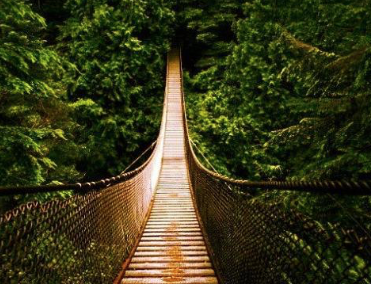
Want to start a movement? A key piece – the first follower. Derek Sivers explains:
You already know that monks like me love parables, those tight little stories that tell the story so much better & completely…
Kevin Aschenbrenner from Victoria, BC in Canada gets it, and wrote up his thoughts in this weekend’s Times-Colonist. Check out what he has to say!
There are a number of places the discussion begins – sometimes we have an idea, sometimes we just gotta do something , and all the possibilities in between – but I love that amazing place where you say the thing my heart was ready for, and my mind embraces, and my legs are ready to run the extra kilometre for.
I hope you keep telling me things, and that I keep listening.
We have colours to paint, flights to take, poems to write, food to share, kids to feed (and to remind: share the cookies), stories to tell so folks understand, and stories to listen to so that we get inspired by how much we have in common, cats to pet & dogs to walk, whales to save (from humans), and so much more.
I say this to you, but I think we’re not the only ones.
So tell me.
– Brother Ian
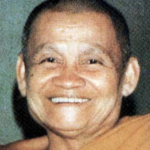
This is a snippet from one of the dharma talks of Ajahn Chah (more familiar to some, affectionately, as Luang Por), with a reminder to let go, let go, let go…
One purpose of morality or virtue is harmony with our spiritual friends. This should be our aim, rather than just trying to fulfill our selfish desires. Knowing one’s position and respecting one’s seniors is an important part of our precepts.
For harmony with the group, we must give up pride and self-importance and attachment to fleeting pleasure. If you do not give up your likes and dislikes, you are not really making an effort.
Not to let go means you seek peace where there is none. Discover this truth for yourself. No need to rely on a teacher outside -mind and body constantly preach to us. Listening to their sermon will remove all doubts.
People get caught in being the leader, the chief, or they get caught in being the student, the follower.
Who can learn from all things without being the student? Who can teach all things without being the chief?
Make bowing a way to care for the entire world around you. Bow with reverence and care. When returning to your cottage put everything down and prostrate first thing. If you go out to sweep, prostrate first. Returning, prostrate. When you have to go to the bathroom, prostrate first, and do it again when you come back, saying in your mind: “Any misdeeds I have done through body, speech, and mind, may I be forgiven.”
Stay mindful always. We monks are very fortunate. We have our dwelling place, good companions, lay support, and the teachings.
All that is left is to practice.

Seekers sometimes think about giving it all up when they’re hurting, and it seems to make sense – an escape to the French Legion, or longer hours at the office, or looking for a new lover to replace the one who just made us hurt by leaving – it feels like this will fill the hole in our hearts, psches, and spirit.
While that seems like a good time to take up a path of renunciation, there are pitfalls & warning flags all over…here’s more in a short interview with Tsoknyi Rinpoche that suggests things to watch for:
Renunciation shouldn’t come from a wounded heart
Interview with Tsoknyi Rinpoche
Student: Rinpoche, I think the point that you mentioned – renunciation not coming from a place of a wounded heart – could you just elaborate on that?
Translator for Rinpoche*: When we are deeply wounded, the ego or strong sense of “I” is aroused and wants happiness and not to suffer so much. The problem is that our egos encounter problems – situations that make us unhappy, so suffering continues and becomes more dramatic and intense. Buddhist Dharma offers an alternative way of living, which begins with the view that everything is impermanent, fragile and changing.
You can experience this feeling of being fragile and shaky inside because deep down you want something solid, something to hold onto that is firm, secure and doesn’t change.
When we grasp to this solid sense of something and can’t let it go, we create wounding and more suffering. People and situations don’t stay fixed in the way we hope they might.
If you have the insight that there is really nothing, ultimately, that is solid, only appearances, it can make you even more upset. Or, alternatively, you may feel more freedom because you see what you were grasping to was not so real or concrete.
Renunciation is sometimes hard to really know – whether it is genuine or not – because the ego can take this sense of letting go and use it to feel “I am special, as I see things are not so real.”
This is not a healthy renunciation that includes an awareness of how interdependent we all are with our suffering. This gives us a sense of compassion and love in it because we see through our grasping enough to see others stuck like we were and want to help. Also, we know to keep moving on the path and that letting go is a long and constant process that defines the path.
*Gerardo Abboud, Translator
Here’s the original article, with our thanks that it is available on the web. Click here for this & more of Rinpoche’s teachings.

I guess we all have our heroes & heroines ‘mongst the folk who tell stories with words that resonate with us…one of our favourites in my little monk community is Sister Teresa (also more famously known as St. Teresa of Avila, and even more famously as a really cool nun).
In this snippet from her writing, she suggests we have to enter ourselves to “enter heaven….”
See how this makes you feel.
“Let nothing disturb you,
Let nothing frighten you,
All things are passing away:
God never changes.
Patience obtains all things.
Whoever has God lacks nothing;
God alone suffices.”
May you trust God that you are exactly where you are meant to be.
May you not forget the infinite possibilities that are born of faith.
May you use those gifts that you have received, and pass on the love that has been given to you.
May you be content knowing you are a child of God.
Let this presence settle into your bones, and allow your soul the freedom to sing, dance, praise and love.
“It is love alone that gives worth to all things.”
“It is foolish to think that we will enter heaven without entering into ourselves.”
“Thank God for the things that I do not own.”
“Untilled ground, however rich, will bring forth thistles and thorns; so also the mind of man.”
“The important thing is not to think much but to love much; and so do that which best stirs you to love.”
“Love turns work into rest.”
“Be gentle to all, and stern with yourself.”
“The closer one approaches to God, the simpler one becomes.”
“God withholds Himself from no one who perseveres.”
“To have courage for whatever comes in life– everything lies in that”
– St Teresa of Avila
 Let me get this straight (this is me, talking to me):
Let me get this straight (this is me, talking to me):
You don’t have to understand things to feel OK about life?
What? I don’t understand.
It’s kinda like this. Stay with me on this one.
Just yesterday, I was talking with a friend who had 56 different problems that she and I were trying to sort out. With some of the more interesting ones, we would analyze the variables that we felt might make things work, and other variables that we were pretty sure were screwing things up.
As we went along, I found myself saying, “ I just don’t understand why he would do that.” Or another time, “They do that all the time, I don’t understand.” Or most dramatically, “He doesn’t hurt anybody by doing that but himself. I just don’t understand.”
My friend looked at me, and asked, “Hmmm. New idea. What if we will get to the bottom of this & make our action plan without understanding why they do what they do.”
Bamm! Big shift! Changed everything! And…we got our plan finished in less than a half hour. We don’t understand, but we were able to carry on, anyway.
Upon reflecting on that idea, I thought of all the major things I’ve done in my life without understanding how those things work, where those things are going, and and sometimes, where they even come from.
I have jumped into things with no idea how things were going to turn out.
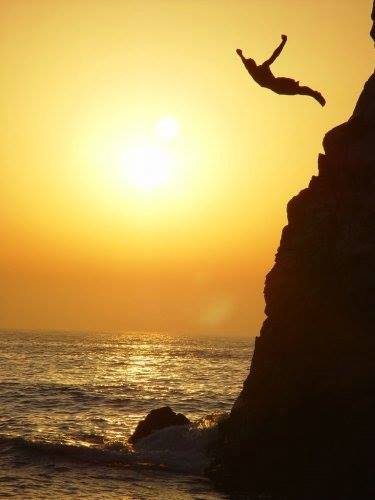
Actually, I do a lot of things with out fully understanding everything about what I’m getting into.
The last 17 times I fell in love, I don’t remember stopping the process by saying, “I just don’t understand why she likes me.”
The last three jobs I moved into, I don’t remember stopping the process by saying, “I don’t know why I like this, so I won’t take the job.”
The last three people that I have met at the coffeehouse (where I meet most of the people in my life)… I don’t remember thinking, “I don’t understand them. I just won’t talk to them.”
It finally hit me what it means. This is it: At the end of the Anglican Communion service, the priest dismisses the congregation with a prayer of peace, which I’ve heard since I was a small kid. The prayer goes something like this: “The peace of God which passes all understanding keep your hearts and minds in the love and service of our Lord Jesus Christ….”
Similarly, Paul’s letter to the Phillipians reports he says, “Be careful for nothing: but in every thing, by prayer and supplication with thanksgiving, let your requests be made known unto God. And the peace of God, which passeth all understanding, shall keep your hearts and minds through Christ Jesus.”
I love that idea – that the peace of God is there, even if we don’t understand it.
In spite of the fact we don’t understand it. Built on the notion we don’t understand it. Accessible, maybe even more accessible, if we don’t understand it.
So just let it in.
And carry on. Understanding will come, when it’s time. We might have to wait for it. But we don’t have to wait for peace.
Share & heal, now.
Blessings to you,
Brother Ian

Ever since you added meditation to your practice, dear monk, you’ve noticed the shift, both subtle & large. You always hope & dream & even say, “I wish everyone did this!” Here’s a start, hey:
Meditation transforms roughest San Francisco schools
David L. Kirp
At first glance, Quiet Time – a stress reduction strategy used in several San Francisco middle and high schools, as well as in scattered schools around the Bay Area – looks like something out of the om-chanting 1960s. Twice daily, a gong sounds in the classroom and rowdy adolescents, who normally can’t sit still for 10 seconds, shut their eyes and try to clear their minds. I’ve spent lots of time in urban schools and have never seen anything like it.
This practice – meditation rebranded – deserves serious attention from parents and policymakers. An impressive array of studies shows that integrating meditation into a school’s daily routine can markedly improve the lives of students. If San Francisco schools Superintendent Richard Carranza has his way, Quiet Time could well spread citywide.
What’s happening at Visitacion Valley Middle School, which in 2007 became the first public school nationwide to adopt the program, shows why the superintendent is so enthusiastic. In this neighborhood, gunfire is as common as birdsong – nine shootings have been recorded in the past month – and most students know someone who’s been shot or did the shooting. Murders are so frequent that the school employs a full-time grief counselor.
Click here for the rest of the story (it gets even better!)

Those of you who know me know that I am a huge fan of Howard Zinn (he made his transition in 2010, but his clear, easy-to-read writing will live in folks’ hearts for a long time, and hopefully will shape the way we do things.)
That’ll be clear as you listen to this short video, as actor Matt Damon reads a bit from one of Dr. Zinn’s essays, as he expands on what Jefferson was after when he said, “The spirit of resistance to government is so valuable on certain occasions that I wish it to be always kept alive.” Martin Luther King overlays that with the necessity of speaking up & speaking out: “Our lives begin to end the day we become silent about things that matter.”
Some people find civil disobedience distasteful, but it’s pretty easy to see that unquestioning civil obedience has been pretty harmful to millions of people in the last century.
Over to you, Dr. Zinn. We miss you, but your flame still burns.
– Brother Ian
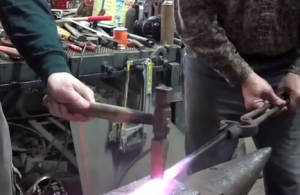
When I talk to friends in the United States about all the gun-related deaths in the country, they say, “That’s just the way it is.”
When I talk to friends in Canada about all the gun-related deaths in the US, they say, “That’s just the way it is, there.”
And I believe it. I reside in Victoria, BC these days, and I heard two veterans in line at the coffeeshop on Remembrance Day last year saying it’s too bad that weapons have been deified by some, as the answer & a necessary thing.
That’s why it’s wonderful to hear what Shane Claiborne (from Sojourners) says & does: They’re taking guns & forging garden tools & plows & farm tools out of ’em, and using them, and bringing life, in this way, from death.
Faith, he says, is about believing in spite of the evidence & with that faith, the evidence begins to change.
It will move you: Read Shane’s article in Sojourners here.
It will move you: watch this little video. It’s real & it’s the evidence we need to support our belief that the killing – our killing – must end. And can end. And will end.
Peace be with you. Make it so, Number One (you’re my number one!)
– Brother Ian

Long ago, in my first year of teaching high school in New Orleans, I can still remember writhing with angst (that’s the way I talked then, too) when the kids would ask me something I didn’t know. They would ask, “Well, what year WAS it that Shakespeare wrote Hamlet?” or “Did they make YOU study grammar like this?” or “Why do we drive on the parkway & park on the driveway?”
Once they found out how this made me suffer (I HAD to have an answer! I was The Teacher!), the questions came fast & furious.
Then, in February a week before Mardi Gras, a junior asked something, and I said, “I don’t know.”
It was the most liberating thing that ever happened to me up to that point. Wow. Shook loose from the ego-wrap of “gotta know.” Use it all the time now: I don’t know!
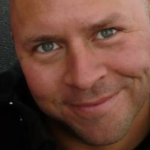
Then I started noticing how folks who said someone was stupid or dumb or worse…usually weren’t all that smart themselves. When I read Derek’s take on this, earlier this year, I thought, as I often do with the stuff he writes – yeah.
Here goes:
The woman seemed to be making some pretty good points, until she stopped with, “Ugh! Those (people she disagrees with) are just so stupid!!”
She could have said Southerners, Northerners, Republicans, Democrats, Indians, or Americans. It doesn’t matter. She had just proven that she wasn’t being smart.
There are no smart people or stupid people, just people being smart or being stupid.

(And things are often not as they seem, so people who seem to be doing something smart or stupid, may not be. There’s always more information, more context, and more to the story.)
Being smart means thinking things through – trying to find the real answer, not the first answer.
Being stupid means avoiding thinking by jumping to conclusions. Jumping to a conclusion is like quitting a game : you lose by default.
That’s why saying “I don’t know” is usually smart, because it’s refusing to jump to a conclusion.
So when someone says “They are so stupid!” – it means they’ve stopped thinking. They say it to feel finished with that subject, because there’s nothing they can do about that. It’s appealing and satisfying to jump to that conclusion.
So if you decide someone is stupid, it means you’re not thinking, which is not being smart.
Therefore: smart people don’t think others are stupid.
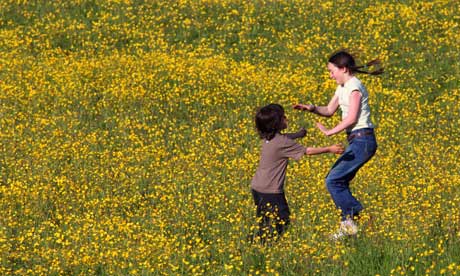
I remember when I was a wee urchin that one of my uncles, ages ago, said to me & my fellow urchin noisy brother, “You know where it says in the New Testament, ‘suffer the little children to come to me’?”
Brother & I went to Catholic school, Episcopal church, Boy Scouts, occasional monk school & Sunday school, so we agreed we were familiar with the line.
“Well, if you don’t pipe down, you chil’ren gonna suffer! Hold it down!” Thus we understood the text & subtext & his deeper meaning.
I do not mean to suggest my good uncle was wrong, but rather would suggest that such things mean different things as we go along. Different interpretations meet different needs, on different days.
The Aramaic Bible in Plain English says that Matthew’s rendering says: “But Yeshua said to them, ‘Let the children come to me and do not forbid them, for the Kingdom of Heaven belongs to such as these.’ In another spot, the Christ (via Matthew) says, “Truly I tell you, unless you change and become like little children, you will never enter the kingdom of heaven.”
Love that.
Reminds me of Rumi:
Out beyond ideas of wrongdoing
and rightdoing there is a field.
I’ll meet you there.
When the soul lies down in that grass
the world is too full to talk about.
I think that’s the child-spirit – the place where the heart & soul can fill up because the ‘ideas of wrongdoing & rightdoing’ don’t filter out the love & light that surrounds us. And play. And fun. And learning (the fun kind).
Become like little children. Then lie down in the grass that the world is too full to talk about.
Ahhhhhhhhhhhh.
– Brother Ian

If you’re like me, you may have observed the incredible technological advances of the past 150 years or so & said, appropriately, “Wow!” Electricity, space travel, medicine, ground & air travel, ways to carry goods, communications from phones to satellites & everything in between….all in a very brief span of time.
Have you ever wondered: Why didn’t people make these discoveries sooner? According to most histories, there are blips of advancement, but mostly that scene is pretty gradual & pretty quiet.
Now, according to Debbie West, there is ongoing research to show there was a lot going on….millenia ago. This is going to change the way you see the world:
Houston Anthropologist Reveals Irrefutable Proof that Recorded History Is Wrong
by Debbie West, for the Conscious Life News
Evidence Found Across the Globe of Highly Evolved Human Species from before the Ice Age, Demand Scientific Recognition of our Past that Depicts Societies of Advanced Technology and Culture
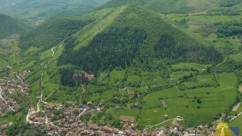
Houston anthropologist Dr. Semir Osmanagich, founder of the Bosnian Archaeology Park, the most active archaeology site in the world, declares that irrefutable scientific evidence exists of ancient civilizations with advanced technology that leaves us no choice but to change our recorded history.
An examination of the age of structures across the earth reveals conclusively that they were built by advanced civilizations from over 29,000 years ago.
“Acknowledging that we are witness to fundamental proof of advanced civilizations dating back over 29,000 years and an examination of their societal structures forces the World to reconsider its understanding of the development of civilization and history,” explains Dr. Semir Osmanagich. “Conclusive data at the Bosnian Pyramid site revealed in 2008 and confirmed this year by several independent labs who conducted radio carbon testing dates the site at 29,400 +/-400 years minimum.”
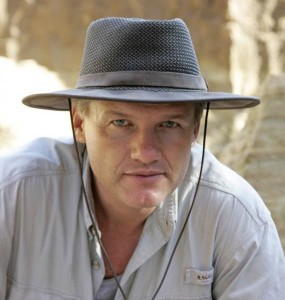
The radiocarbon dating tests of 29,200 years +/- 400 years was done by Radiocarbon Lab from Kiew, Ukraine, on organic material found at the Bosnian Pyramid site. Physicist Dr. Anna Pazdur of Poland’s Silesian University first announced the news at a Press Conference in Sarajevo in August of 2008.
Professor of Classical Archaeology from the University of Alexandria Dr. Mona Haggag called this discovery “writing new pages in European and World history.” The C14 date of 29,000 years at the Bosnian Archaeological Park was obtained from a piece of organic material retrieved from a clay layer inside the outer casing to the pyramid. It follows a sample date obtained during the 2012 dig season on material located above the concrete at 24,800 years, meaning this structure has a construction profile stretching back almost 30,000 years.
“The ancient people who built these pyramids knew the secrets of frequency and energy. They used these natural resources to develop technologies and undertake construction on scales we have never witnessed on earth,” said Dr. Osmanagich. Evidence clearly shows that the pyramids were built asancient energy machines aligned with the earth’s energy grid, providing energy for healing as well as power.
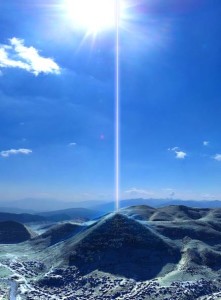
Ancient historians in the US have news just as astonishing as anything found in the far corners of the globe. For instance, the Rockwall discovery outside of Dallas, Texas, is only one example of how we are now re-examining ancient mysteries to reveal more about our past, right in the United States. H2 (History 2) popular series Unearthing Ancient America recently filmed an episode about the Rockwall that will air later this year. The Texas site is a complex and massive wall ten miles in diameter built over 20,000 years ago and covered by soil seven stories below the ground. The question is by whom was this structure built and for what purpose and, most importantly, how can knowledge left by these past civilizations help shape our future?
Newly-revealed or rediscovered traces of ancient civilizations have ignited an innate curiosity about human origins as reflected by recent coverage in mainstream media and TV. The November 2013 issue of National Geographic: 100 Greatest Mysteries Revealed-Ancient Civilizations Unearthed says,
“Sometimes cultures leave behind mysteries that baffle those who come after them, from standing stones to coded manuscripts, indications that ancient people indeed had a profound purpose.”
Forward-thinking scientists continue to pursue knowledge from our past that is useful to determine a better future. Renowned author Michal Cremo in his book Forbidden Archeology theorizes that knowledge of advanced Homo-sapiens has been suppressed or ignored by the scientific establishment because it contradicts the current views of human origins that don’t agree with the dominant paradigm. Cremo’s body of work has been described as “a useful teaching resource, raising a wide range of issues covering aspects of knowledge transfer, sure to be provocative in the classroom.” It has been reviewed with widespread appraisal by hundreds of academic journals.
Gobekli Tepe in Eastern Turkey
Results clearly indicate that similar advanced civilizations of humans were present all across the globe at that time in history. For example, Gobekli Tepe located in Eastern Turkey, is a vast complex of enormous megalithic stone circles with a radius of between 10 and 20 meters, much larger than the well-known Stonehenge in Great Britain. Excavations at Gobekli Tepe that began there in 1995 revealed radio carbon dating at least 11,600 years. German archaeologist Dr. Klaus Schmidt from the German Archaeological Institute, Berlin, Germany, with the support of ArchaeoNova Institute from Heidelberg, Germany, has led the excavation of these recently-discovered pre-historic megalithic circles at the Turkey location.
“Gobekli Tepe is one of the most fascinating Neolithic locations in the world,” Dr. Klaus Schmidt claims. But as he explains in a recent report, to understand the new finds, archaeologists need to work closely with specialists in comparative religion, architectural and art theory, cognitive and evolutionary psychology, sociologists using social network theory, and others.
“It is the complex story of the earliest, large settled communities, their extensive networking, and their communal understanding of their world, perhaps even the first organized religions and their symbolic representations of the cosmos,” as reported by Klaus Schmidt.
In addition to the megalithic structures, figures and carvings have been discovered, depicting animals of pre historic nature such as dinosaurs and other wild life. Since excavations started in 1995, four of the circles have been partially cleaned, but it is thought that there are a total of up to 50 circles hidden underground. These vast monoliths, soaring seven meters in height and 25 tons in mass at Gobekli Tepe, are situated right in the heart of what we perceive as the origin of civilization. This find offers new guidance to the true history of earth and our ancient civilizations.
“Our archaeological research goal is not to simply uncover all of the megalithic circles but to try to figure out their purpose,” adds Schmidt.
The Bosnian Valley of the Pyramids now in the eighth year of excavation spans six square kilometers in the Visoko River Basin 40km northwest of Sarajevo. Comprised of four ancient pyramids almost three times the size of Giza and an extensive subterranean pyramid tunnel complex, new discoveries each year continue to reveal proof of a much different history of mankind on earth. The central pyramid of the Sun rises a colossal 420 meters in to the air and has a mass of millions of tons. By comparison the Great pyramid of Cheops (Khufu) in the Giza plateau is 146 meters high, making the Bosnian Pyramids the largest and oldest known pyramids on the planet. Since research began at the Bosnian site, Dr. Osmanagich has amazed the scientific and archaeological community by gathering a team of interdisciplinary engineers, physicists and researchers from around the world to conduct open and transparent investigation of the site to try and discover the true nature and purpose of this pyramidal complex.
“This is an unknown culture presenting highly-advanced arts and sciences, technology capable of forming truly massive structures and we believe in that process demonstrating an ability to harness pure energy resources,” comments Tim Moon, who has recently joined Osmanagich as lead archeologist at the Bosnian site.
The archaeological project delivered another significant finding this year in the pyramid tunnel complex known as Ravine. Tunneling deep into a ridge line leading toward the Pyramid of the Sun the team has unearthed several megalith stones. In August an enormous stone estimated at 25,000 kgs was uncovered approximately 400 meters into the labyrinth. “This is a hugely significant find,” comments Moon. “Here we have a massive stone, possibly a constructed ceramic, buried under hundreds of thousands of tons of material. We are locating foundation walls around its perimeter and cut stone blocks.” Large quantities of artifacts have been recovered from the associated tunnels leading to the site, including effigies painted on stone, art objects and a series of hieroglyphics or ancient texts carved into the tunnel walls.
Dr. Osmangich stresses that it is time for open sharing of knowledge so we can understand and learn from our past.
“It is time for us to open our minds to the true nature of our origin and destruction of each other as a civilization on this planet. Our mission here is to realign science with spirituality in order to progress as a species, and this demands a clear path of shared knowledge.”
Visitors are welcome to the Bosnian Valley of the Pyramids and its Foundation offers a volunteer program each dig season, running June to September.
To hear Dr. Sam’s interview on Lost Knowledge go to: http://theilluminatinetwork.com/2013/09/lost-knowledge-3773/
For more on the Bosnian Pyramids go to www.icbp.ba.

Deborah West worked in corporate public relations and media for over 20 years and is currently a freelancer, reporting on a wide variety of topics including disclosure, ancient and multidimensional civilizations, the the shift in humanity’s consciousness and brings truthful reporting to topics ranging from healthcare to energy.
She writes a column called Lost Knowledge at The New Era Times and has a weekly radio show called Lost Knowledge on Tuesdays 3-5pm CST. To see her articles go here.
This article is offered under Creative Commons license. It’s okay to republish it anywhere as long as attribution bio is included and all links remain intact.
Re-posted from our friends at The Conscious Times – check them out!
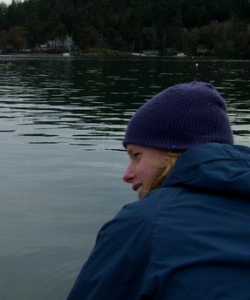
One of the awesome things about living in a small community on a small island with small numbers of people with large hearts is the wonderful gifts we give each other.
On San Juan Island off the coast of Washington (the state, not the city) & just across the water from Victoria (the city, not the queen), lives my good & dear friend Ryan Browne, who shared this little tale about something he discovered when he came rolling home one day. While I’m pretty sure “Thoreau” is a metaphorical nom d’plume here (pretty sure he didn’t know about plastic bowls), it’s a sweet bit of writing for Ryan, who I think of as a modern-day Thoreau, in his own right.
Here’s more, from Ryan:
Sorry this took so long to write…
To the anonymous person who left this Thoreau poem, handwritten on a cedar shingle on my kitchen counter months ago: YOU are the BEST kind of person..
You truly made my day, and have done so each and every time that I look upon this poem. (which is now hanging in my kitchen).
You inspire me to pay it forward – to take a little bit of time out of each day to give appreciation, thoughtfulness, and inspiration to others, while expecting nothing in return. It’s these little things in life that give me sustenance while this beautiful, crazy planet seems to be spinning so fast.
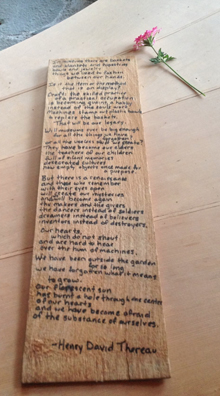
Whoever you are, keep on shining, you wonderful human.. The world needs you now more than ever.
In museums there are baskets
and blankets and tapestries
bowls and jewelry
things we used to fashion
between our hands.
Is it the item or the method
that is on display?
Craft: The skilled practice
of a practical occupation
is becoming quaint. A hobby
instead of the soul’s work.
Machines stamp out plastic bowls
to replace the baskets.
That will be our legacy.
Will museums ever be big enough
for all the things we have forgotten?
Or all the useless stuff we create?
They have become our elders
the teachers of our children
full of silent memories
desecrated cultures
now empty objects once made for a purpose.
But there is a renaissance
and those who remember
with their eyes open
will create our mysteries
and we will become again
the makers and the givers
the dancers instead of soldiers
dreamers instead of believers
inventors instead of destroyers.
Our hearts,
Which do not shout
And are hard to hear
over the hum of machines.
We have been outside the garden
for so long
We have forgotten what it means
to grow.
Our florescent sun
has burned a hole through the center
of our hearts
and we have become afraid
of the substance of ourselves.
Henry David Thoreau (sic)
The other day my friend Nalalie sent this over, when someone one asked, “How come people put their hands together & bow to each other?” Good start – there’s a bit more to it than that! Here’s a little explanation, if you were wondering:

NAMASTE, Friends..! :
Why do we do Namaste?
Indians greet each other with namaste. The two palms are placed together in front of the chest and the head bows whilst saying the word namaste. This greeting is for all – people younger than us, of our own age, those older than friends, even strangers and us.
There are five forms of formal traditional greeting enjoined in the shaastras, of which namaskaram is one. This is understood as prostration but it actually refers to paying homage as we do today when we greet each other with a namaste.
Namaste could be just a casual or formal greeting, a cultural convention or an act of worship. However there is much more to it than meets the eye. In Sanskrit namah + te = namaste. It means – I bow to you – my greetings, salutations or prostration to you. Namaha can also be literally interpreted as “na ma” (not mine). It has a spiritual significance of negating or reducing one’s ego in the presence of another.
The real meeting between people is the meeting of their minds. When we greet another, we do so with namaste, which means, “may our minds meet,” indicated by the folded palms placed before the chest. The bowing down of the head is a gracious form of extending friendship in love and humility
The spiritual meaning is even deeper. The life force, the divinity, the Self or the Lord in me is the same in all. Recognizing this oneness with the meeting of the palms, we salute with head bowed the Divinity in the person we meet. That is why sometimes, we close our eyes as we do namaste to a revered person or the Lord – as if to look within. The gesture is often accompanied by words like “Ram Ram,” “Jai Shri Krishna”, “Namo Narayana”, “Jai Siya Ram”, “Om Shanti” etc – indicating the recognition of this divinity.
When we know this significance, our greeting does not remain just a superficial gesture or word but paves the way for a deeper communion with another in an atmosphere of love and respect.
Keshav Pandit
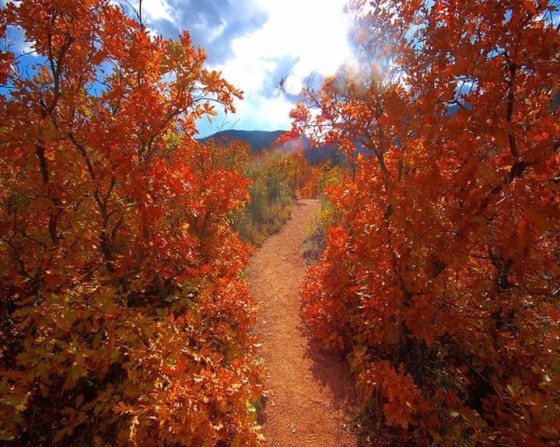
Seems to me that it’s something everyone struggles with – finding the wellspring of love & devotion & allowing for a natural & easy flow, without shaping that flow with a litany of “you should,” “you should,” and “you really should!” Steven suggests a way to move forward while being gentle with your evolving spirit:
The Importance of Taking the “Should” out of Spiritual Practice
by Steven Goodheart (here’s more)
The more one does one’s spiritual practice with a sense that it should be done, the more one creates a sense of self. And the greater the sense of a self trying to become “spiritual” or “liberated,” the more suffering we experience. We suffer both when we “fail,” and we suffer when we “succeed,” either way reinforcing our false self-identifications.

So the koan is: how do we practice, without making it “practice?” How can one have what the Buddha called atappa, or ardency in practice, without reinforcing our sense of becoming? The answer to this koan involves, perhaps not surprisingly, paying attention ― paying real attention to our motives and to our habitual ways of doing anything worthwhile.
Paradoxically, real “self-improvement” naturally arises when we let go of all sense of self-improvement and simply open ourselves up to being really being present in each moment. There is a wonderful innocence in simply being present in the moment. There is great purity in simply paying attention of what is arising as simply what is arising, and then acting, or not acting, according to our best sense of wisdom, compassion, and insight into what is skillful and what is not, what produces suffering and what does not.
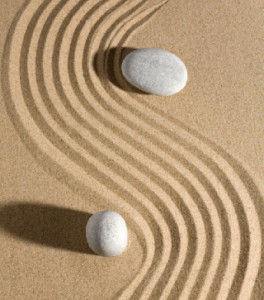
When we do this, we are not trying to “improve,” or “be a better person” so much as making the right effort to see what is good and wise in the present moment.
When we get busy with being present, when we really pay attention to what arises in our hearts and minds, our sense of self naturally just falls away. We become, in the degree of our attention, an action without an actor, a doing without a doer. One doesn’t cease to be; one simply is. We get glimpses of this when we become fully absorbed in something, or “in the flow of things,” and no thought of self arises or can be found. But mindful attention is even better than absorption, which can make us oblivious to anything but what we are focusing on.
With mindful attention, the sense of self falls away and we are fully aware of what’s going on without attaching to or clinging to sense contacts or to thoughts and feelings that arise and fall away.
The simplicity of this paying attention practice that is not practice is staggering, once you begin to understand it. You don’t have to be sitting on a cushion to pay attention, though that’s a good place to practice it formally. Each moment of our day is an opportunity to show up ― to be consciously present and aware. So much of the time we are so lost in thoughts, feelings, ruminations, and internal dialogues that we are not really alive, but just existing in a self-dream.
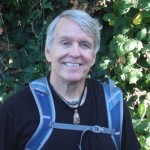
Truly paying attention breaks the spell of “self” and helps us to stop “self-ing” and start “be-ing.” It helps us see our connections and relationships to others and to all things. We feel our true wholeness.
Living this way, “How do I make myself better?” isn’t even the question; the very thought of “self-improvement” is actually an impediment. The real question is: Do I want to be alive? The issue is waking up, showing up, being present. There is no “should” or “must” in waking up! All beings naturally want happiness, and when we realize that we are truly happy to the degree we are truly present with our hearts and minds, then nothing can keep us from opening up.
Mindful attention is like sunlight, shedding light on what is dark and hidden and causing all the good things of our hearts to blossom and bloom into the possibilities of full being. There’s nothing we have to do to make this happen; it just happens when we show up each day, each moment, with no thought of self, but simply wanting to see what is what—as much as possible, without delusion, illusion or self-deception about anything. Yes, it’s a great work, but it’s such a freeing, happy one!
And it all starts in a moment, this moment.
Why not begin?
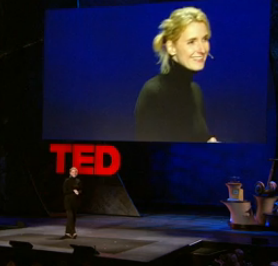
You know Liz Gilbert from her book Eat, Love, Pray.
You may know her from her wonderful TED talk about genius & how we ruin it (check it here.)
Here’s a new way to get to know her: She writes a wonderful piece in The Atlantic (published a couple of days ago, here) celebrating her memory of writer & poet Jack Gilbert (unrelated), who wrote of the way we can look for (and find!) what she calls a “stubborn gladness” in the reversals & difficulties we our everyday lives. She cites his lines:
We must risk delight. We can do without pleasure,
but not delight. Not enjoyment. We must have
the stubbornness to accept our gladness in the ruthless
furnace of this world.
And more. Here’s the essay. You’ll be glad where it leaves your heart. Thanks, Liz.